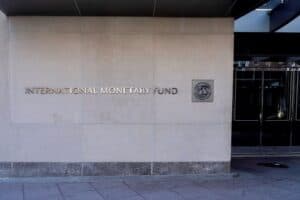The Reserve Bank ended the year on a high note with another repo rate cut that will put a little more money in indebted consumers’ pockets.

As economists expected, the Reserve Bank cut the repo rate today by 25 basis points based on steadier growth for the local economy and a balanced outlook for inflation. The decision was unanimous.
Lesetja Kganyago, governor of the South African Reserve Bank (Sarb), said it was a turbulent year for the global economy with shifting trade patterns, although global growth is holding up better than expected.
He pointed out that while inflation appears to be contained in the euro area, price dynamics in other major economies are more challenging, with deflation risk in China and inflation materially above 2% targets in the United Kingdom, Japan and the US.
In emerging markets, by contrast, inflation eased and 2025 was better than expected thanks to stronger capital flows and a weaker dollar, as well as favourable terms of trade, he said.
ALSO READ: Will increase in inflation encourage Reserve Bank to drop repo rate on Thursday?
SA’s economic growth looking steadier
Turning to South Africa, Kganyago said economic growth is looking steadier than last year.
“The second-quarter outcome surprised on the upside and the third-quarter indicators are looking broadly positive. Our 2025 growth forecast has therefore been revised slightly higher, to 1.3%. We continue to see growth nearing 2% over the forecast horizon. Employment has also been rising.”
In addition, Kganyago pointed out that household spending has been relatively strong to date, supported by wealth effects, further withdrawals from two-pot pension savings and lower inflation and interest rates.
However, he said investment disappointed, contracting further in the first half of the year.
“We expect an investment recovery in the second half and if this materialises it will be an encouraging signal that the economy is getting back to its historic growth trend. As it stands, growth is better, but not yet healthy.”
Risks to the economic growth outlook assessed as balanced
The risks to the growth outlook are assessed as balanced. Moving to prices, Kganyago said inflation accelerated somewhat over the past few months, reaching 3.6% for October, which is higher than the 3% average for the first half of the year.
“The uptick is mainly due to non-core items: meat, vegetables and fuel. We continue to see this pressure as temporary, with inflation heading lower again from the beginning of next year. Indeed, recent outcomes undershot our forecasts slightly.
“Due to these downside surprises, together with a stronger rand and a lower oil price assumption, we have small downward revisions to our inflation outlook, for 2025 and 2026. We remain on track to deliver 3% inflation over the medium term.”
ALSO READ: MTBPS: rand strengthened to below R17/$ for first time in almost 3 years
Further progress to 3% inflation objective
Kganyago said the Monetary Policy Committee (MPC) did not have an update from its usual survey this meeting, but market rates and surveys of analysts both show further progress towards the 3% objective.
“Core goods prices are benefitting from exchange rate strength. Food price inflation seems to have peaked, although we have a small upward revision to this forecast, mainly due to beef prices. Services inflation is unchanged from the last meeting and the announced medical aid increases are lower than last year’s. At the same time, housing inflation has accelerated, which warrants ongoing scrutiny.”
The MPC also assessed the risks to the inflation outlook as balanced. Kganyago said against this backdrop, the MPC decided to reduce the repo rate by 25 basis points, to 6.75%. Members agreed there was scope now to make the policy stance less restrictive, in the context of an improved inflation outlook.
ALSO READ: Here are SA’s top 10 business risks, with economic slowdown in first place
MPC considered various scenarios
According to Kganyago, the Quarterly Projection Model continues to forecast gradual rate cuts as inflation subsides.
For this meeting, the MPC again considered two risk scenarios:
- The first scenario featured a US dollar rebound, recognising that while the rand has appreciated this year, this partly reflects broad dollar weakness, not just rand strength. In this scenario, the rand depreciates back to its 2023 levels against the dollar, rather than holding on to its recent gains, as in the MPC’s baseline.
- The second scenario was based on higher administered prices, linked to a rapid correction of the R54 billion electricity pricing error disclosed a few months back. This scenario also had inflation expectations staying higher for longer, in response.
Kganyago said both scenarios featured tighter monetary policy, with rates coming down more slowly compared to the baseline. “The administered price scenario in particular shows that if price setters take on board the 3% target, we will have space to get to lower rates faster.”
ALSO READ: Mini-budget: new inflation target and fiscal anchor is coming
New inflation target of 3%
Turning to the new inflation target, he said “the revised target, agreed between the minister of finance and myself as the Governor of the South African Reserve Bank, is 3% plus or minus 1 percentage point”.
“As we move from a range target to a point target with a tolerance band, it is important to understand what the new target means. The tolerance band of 1 percentage point either side of 3% does not mean we will be indifferent to inflation anywhere between 2% and 4%. We want to be at 3%.
“However, no central bank has the tools to deliver inflation at an exact point all the time. As flexible inflation targeters, we also recognise that trying to offset all price shocks would create undesirable volatility in output.”
Kganyago said to support communication and accountability, the Sarb wants citizens to understand that inflation will not always be precisely at 3%. “When there are deviations, we will explain what has driven inflation away from target and we will do what is required to get back to target.
“Most of the time, we should be expected to keep inflation within the tolerance band, with breaches occurring only when there are severe shocks. We will always be setting policy so that inflation is going back to 3%.”
ALSO READ: What lowering the inflation target will mean for SA
Effects of new inflation target only felt in a year or two
However, he pointed out that monetary policy actions have their main effects on prices after 12 to 24 months. “You should expect us to achieve our target over that horizon. Accordingly, we want longer-run expectations to anchor at 3%, staying there even when there are shocks.
“This lag, between monetary policy decisions and outcomes, also explains why the 3% target is taking effect now, but will be achieved over the forecast period.”
Kganyago said the MPC has long emphasised the need for macroeconomic and structural reforms to boost potential growth, achieve a sustainable debt path and shift to a low-inflation regime.
“There has been significant progress on reform this year, as underscored by the recent credit rating upgrade from Standard & Poor’s, as well as South Africa’s exit from the Financial Action Task Force greylist. The global environment nonetheless remains challenging and therefore it is urgent to sustain domestic reform efforts.”






